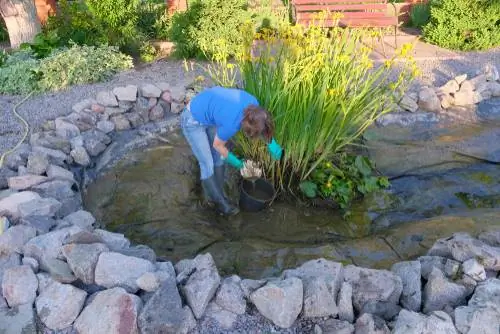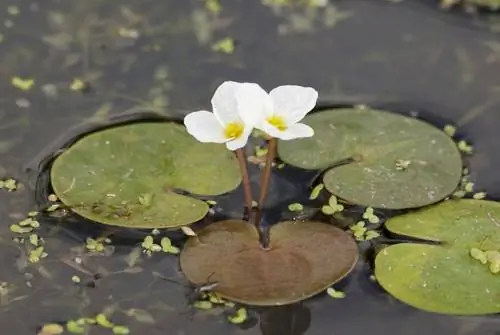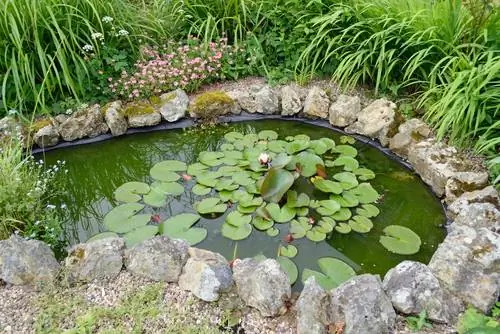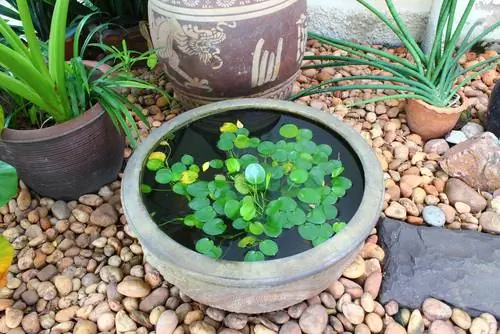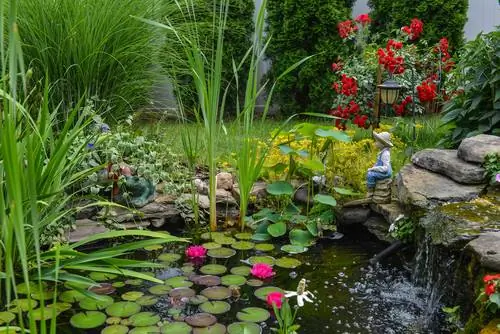- Author admin [email protected].
- Public 2023-12-16 16:46.
- Last modified 2025-01-23 11:21.
The good news first: A garden pond with aquatic plants is much easier to care for than a sterile pond basin. You can find out why this is and what you should consider when caring for your pond plants in this practical guide!
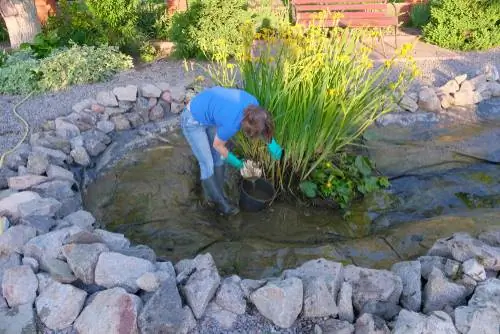
How do I properly care for aquatic plants in the garden pond?
Caring for aquatic plants in the garden pond includes: using a suitable substrate, using planters, checking iron content, using low-phosphate fertilizer, regular pruning, removing dead plant residue and replenishing evaporated water.
Aquatic plants partly ensure cleanliness themselves
Aquatic plants absorb excess nutrients from the water and, in turn, supply the latter with oxygen. In this way, they naturally create a biological balance in which all pond inhabitants - including the animals - feel comfortable. In order for the water values to remain stable over the long term and for your aquatic plants to thrive, some care measures are still necessary.
The most important care measures for aquatic plants
- A mixture of loam, sand, gravel and clay as well as some peat is recommended as a substrate. Humus and other nutrient-rich soils are taboo. These would only affect the water quality and promote undesirable algae growth.
- For several reasons it makes sense to put the aquatic plants in planters from the start (in containers made of plastic or other materials).
- Measure the iron content in the water (corresponding tests (€8.00 on Amazon) are available in hardware stores and garden centers as well as online). A sufficiently high iron content is important so that the plants grow optimally and bloom with intense colors. Add an iron fertilizer if necessary. But be careful: under no circumstances should there be too much iron in the pond, otherwise the water risks taking on a brownish color.
- Speaking of fertilizer: Only use low to phosphate-free products. Otherwise, you are also fertilizing potential algae. In general, you should only fertilize when necessary. To do this, you need to carry out tests regularly.
- Immediately after winter, before the onset of spring, it is important to cut back the plants in the bank area, right down to the bottom. In spring you can also shorten the actual aquatic plants. If you let everything grow unhindered, you won't be able to see much of the pond itself.
- In general, you should always remove old and dead plant remains from the water immediately. The putrefaction process would simply contaminate the water.
- Don't forget to constantly refill any water that has evaporated. You usually only need to change the water in exceptional cases (for example if algae growth increases dramatically or if the pond water has accidentally been contaminated with pollutants). Once a year you can't avoid changing the water - when cleaning the pond.
Conclusion
Stick to the care measures described and ensure wonderful flora in your garden pond. Basically, make sure to use fewer aquatic plants rather than more, because the pretty ones grow bigger and more lush on their own.

